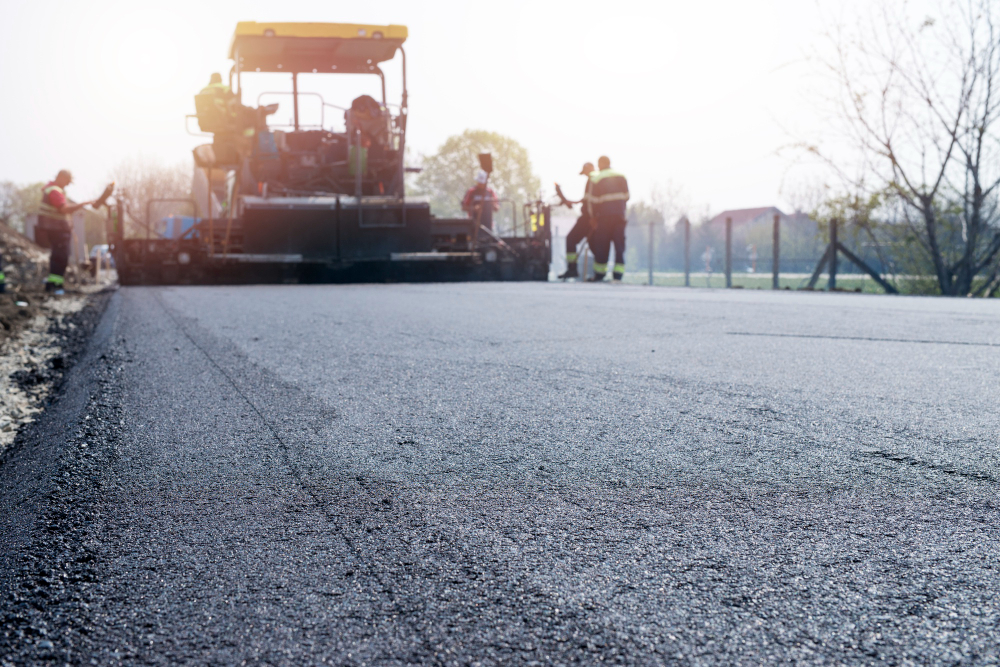
Sealcoating your residential or commercial asphalt surfaces is more than just a routine maintenance task; it’s an investment in the longevity and aesthetic appeal of your property. Whether you're in Sanford, FL or any other part of the country, understanding the best practices and avoiding the common pitfalls in this critical process is key to ensuring a job well done. In this comprehensive guide, we'll walk you through the essential dos and don'ts of asphalt sealcoating in Sanford, FL.
Before delving into the best practices, it’s important to understand the purpose of sealcoating. This protective layer acts as a barrier, shielding your asphalt from the detrimental effects of water, UV rays, chemicals, and general wear and tear. It is both preventive and restorative, helping to maintain your asphalt’s integrity and smooth surface.
Do: Sealcoat regularly to maintain asphalt’s black finish and smoothness.
Don’t: Wait until the asphalt looks aged or distressed; regular maintenance is key to preventing costly repairs.
Sealcoating at the right time is crucial to its effectiveness. Generally, new asphalt should be sealed within the first year, and thereafter, every 2-3 years, depending on the level of use and exposure to the elements.
Do: Keep an eye on the condition of your asphalt and maintain a regular sealcoating schedule.
Don’t: Rush the process or wait until the weather is about to change; application in extreme heat or cold can affect the quality of the finish.
Proper preparation is the backbone of a successful sealcoating job. Any prior damage or decay needs to be addressed, and the surface should be clean and dry to ensure the new sealant adheres uniformly.
Do: Clean the surface thoroughly using appropriate cleaners and repair any cracks or potholes beforehand.
Don’t: Apply sealant over wet or dirty surfaces; it will not adhere properly and can lead to premature failure.
Applying the sealcoating is where skill and attention to detail pay off. The goal is a smooth, even coat applied at the right thickness for optimal protection without creating a slick surface.
Do: Use the right equipment, mix the sealant according to the manufacturer's instructions, and apply it in consistent, overlapping strokes.
Don’t: Apply sealant too thickly, which can cause it to become brittle, or too thinly, which won’t provide adequate protection.
Allowing the sealcoating to cure is perhaps the most important step. This process can take anywhere from 12-48 hours, depending on the conditions, so it’s crucial to keep traffic off the surface until it’s fully cured.
Do: Post clear signs to prevent any traffic on the freshly coated area until it’s cured.
Don’t: Rush the curing time to open the surface up to traffic before the sealant has set, as it will damage the finish.
Once the sealcoating is cured, regular maintenance becomes crucial. Routinely inspecting the sealed surface and addressing any issues promptly will extend the life of the sealant and help avoid costly repairs.
Do: Keep the sealed area clear of debris and promptly remove any oil or chemical spills.
Don’t: Neglect regular inspections or leave chemical spills to soak into the sealant.
While DIY sealcoating may seem like a cost-effective option, professional application ensures that the right techniques, equipment, and materials are used, maximizing the longevity of the sealcoating.
Do: Research local sealcoating professionals with a good track record and get multiple quotes.
Don’t: Assume you can achieve the same results as a professional without proper training and experience; amateur mistakes can lead to premature failure of the sealant.
Sealcoating materials can have an environmental impact, which is why it’s essential to follow local guidelines and regulations.
Do: Dispose of sealcoating materials responsibly and in accordance with local environmental laws.
Don’t: Neglect the environmental impact of sealcoating or its byproducts; non-compliance can result in fines or other penalties.
Sealcoating is an investment that plays a significant role in maintaining or increasing your property’s value. Properly maintained asphalt looks better and lasts longer.
Do: Consider the long-term savings that come with routine sealcoating versus the cost of more extensive repairs or replacement.
Don’t: View sealcoating as an unnecessary expense; it provides an excellent return on investment in terms of preventing damage and maintaining curb appeal.
Local climate and conditions can influence the lifespan and performance of sealcoating. Working with a company that understands your specific area can make a difference.
Do: Choose a sealcoating provider experienced in the Sanford, FL area who can tailor their approach to local conditions.
Don’t: Hire a provider based solely on price; look for a balance of value, quality, and convenience.
The industry of asphalt maintenance, including sealcoating, has seen technological advances. New formulations and application techniques can offer improved durability and performance.
Do: Stay informed about the latest advancements in sealcoating products and processes.
Don’t: Stick to old habits or outdated products; embracing innovation can lead to better results.
In conclusion, taking the time to understand and implement these do’s and don’ts of asphalt sealcoating can turn a routine maintenance task into a strategic part of your property management. By following these guidelines, you’ll be on your way to maintaining not only the structural integrity of your asphalt but also its visual appeal—ensuring that your investment stands the test of time. Whether you're a homeowner, a business owner, or a property manager, making informed choices about sealcoating can enhance the safety and beauty of your environment for years to come. Remember, the seal is the real deal when it comes to asphalt care. If you're looking for sealcoating in Sanford, FL, contact Florida Sealcoating today for free estimates.